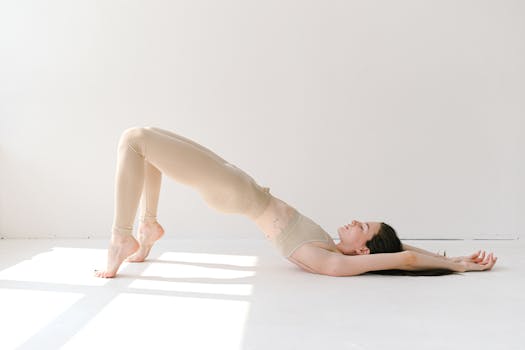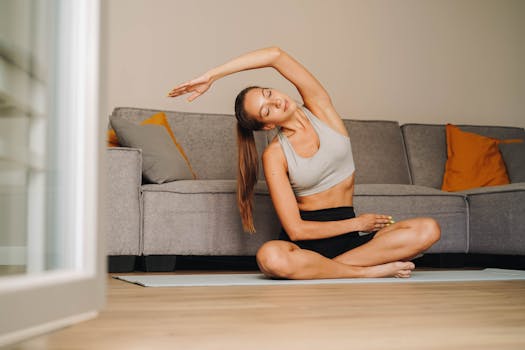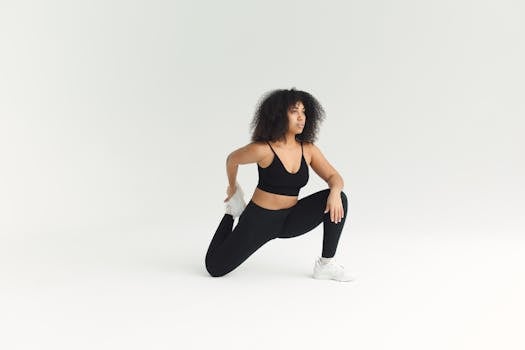
Mind-Body Connection: Enhancing Your Practice with the Principles of Yoga and Pilates
Let’s talk about the Mind-Body Connection! As someone who’s passionate about fitness and wellness, I’ve always been fascinated by the way our minds and bodies are connected. Have you ever noticed how a good workout can boost your mood, or how a stressful day can leave you feeling exhausted? That’s the mind-body connection at work!
What is the Mind-Body Connection?

The mind-body connection refers to the intricate relationship between our thoughts, emotions, and physical sensations. It’s the way our brain processes information, sends signals to our body, and responds to physical sensations. This connection is what allows us to experience emotions like happiness, sadness, and fear, and it’s what drives our behaviors and habits.
When we’re in a state of balance and harmony, our mind-body connection is strong, and we feel more energized, focused, and capable of handling life’s challenges. But when we’re stressed, anxious, or feeling overwhelmed, our mind-body connection can become disrupted, leading to feelings of fatigue, burnout, and disconnection from our bodies.
How Yoga and Pilates Enhance the Mind-Body Connection

So, how can we strengthen our mind-body connection and improve our overall well-being? That’s where yoga and Pilates come in! Both practices offer a unique approach to cultivating a deeper awareness of our thoughts, emotions, and physical sensations, and they can be adapted to suit any fitness level or goal.
Yoga is an ancient practice that originated in India, and it’s all about uniting the body, mind, and spirit. Through various postures, breathing techniques, and meditation, yoga helps us develop greater body awareness, flexibility, and strength, while also reducing stress and anxiety. By focusing on the present moment and letting go of distractions, we can quiet the mind, listen to our intuition, and connect with our inner selves.
Pilates, on the other hand, is a more modern practice that focuses on building core strength, improving posture, and enhancing flexibility. Developed in the early 20th century by Joseph Pilates, this method emphasizes the importance of engaging the mind and body in a holistic way, using controlled movements, breathing techniques, and concentration to achieve a state of balance and harmony.
Principles of Yoga and Pilates for a Stronger Mind-Body Connection

So, what are the key principles of yoga and Pilates that can help us enhance our mind-body connection? Here are some of the most important ones:
- Body Awareness: Developing a greater awareness of our physical sensations, posture, and movement patterns is essential for cultivating a stronger mind-body connection. By paying attention to our bodies and honoring their needs, we can reduce stress, improve our overall health, and feel more grounded and centered.
- Breath Awareness: Our breath is a powerful tool for connecting with our bodies and calming our minds. By focusing on our breath, we can quiet the mind, reduce anxiety, and access a state of relaxation and inner peace.
- Mindfulness: Being present in the moment, without judgment or distraction, is a fundamental principle of both yoga and Pilates. By cultivating mindfulness, we can develop a greater awareness of our thoughts, emotions, and physical sensations, and respond to them in a more conscious and intentional way.
- Core Strength: Building core strength is essential for maintaining good posture, reducing back pain, and improving our overall physical stability. By engaging our core muscles and developing greater body awareness, we can feel more confident, empowered, and connected to our bodies.
Putting it all Together: Tips for Enhancing Your Mind-Body Connection

Now that we’ve explored the principles of yoga and Pilates, let’s talk about how to apply them in our daily lives. Here are some tips for enhancing your mind-body connection:
- Start small: Begin with short, manageable practices, such as a 5-10 minute yoga or Pilates routine, and gradually increase the duration and intensity as you become more comfortable.
- Listen to your body: Honor your physical limitations and listen to your intuition. If you’re feeling tired, sore, or uncomfortable, take a break, rest, or modify the practice to suit your needs.
- Focus on your breath: Bring your attention to your breath, feeling the sensation of the air moving in and out of your body, and use it as an anchor to calm your mind and connect with your body.
- Practice mindfulness: Cultivate mindfulness in your daily activities, such as eating, walking, or even doing the dishes, by paying attention to your thoughts, emotions, and physical sensations, and responding to them in a more conscious and intentional way.







